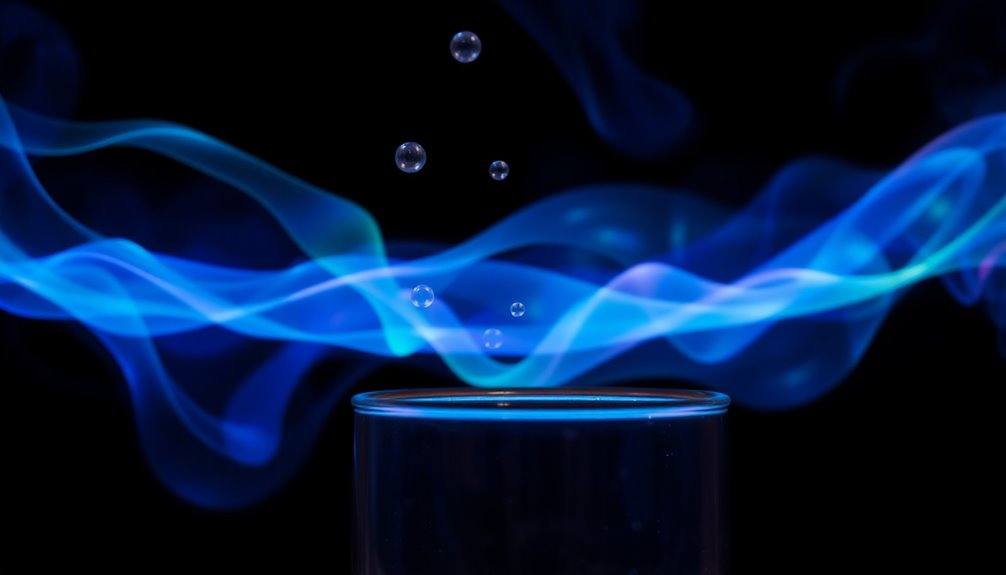Gas is a state of matter that lacks fixed shape or volume, so it expands to fill any container it's in. Its molecules are constantly moving and spaced far apart, resulting in lower density. You'll notice gas pressure rising as these molecules collide with the walls of their container. The behavior of gas molecules changes with temperature; higher temperatures mean faster movement and more collisions. While gases like oxygen and nitrogen are essential for life and industry, they can pose safety risks if not handled correctly. Keep exploring to find out how to use gas safely and efficiently.
Key Takeaways
- Gases have no fixed shape or volume; they expand to fill their containers completely.
- They are composed of molecules that move constantly and collide, creating pressure.
- Gas properties include lower density and viscosity compared to liquids, with greater molecular spacing.
- Different types of gases serve various applications, including elemental, industrial, and toxic gases.
- Safety measures, like proper ventilation and leak detection, are crucial when handling gases.
Gas Properties and Characteristics

When you think about gases, it's important to realize they lack a fixed shape or volume, expanding to fill whatever container they're in.
Gases consist of widely spaced molecules, which results in lower density and viscosity compared to liquids. The average distance between gas molecules is about 12 times greater, creating a unique environment where gas pressure arises from countless collisions of molecules with container walls.
This pressure is influenced by temperature; higher temperatures increase the kinetic energy of the molecules, leading to faster speeds.
Additionally, the mean-free path, or the distance a molecule travels before colliding with another, plays a crucial role in gas diffusion.
These properties make gases essential in various scientific and industrial applications.
Gas Behavior at Molecular Level

Understanding gas behavior at the molecular level reveals how these tiny particles interact constantly and chaotically, creating pressure and influencing diffusion.
Gases consist of numerous molecules or atoms that move freely, with an average distance between them significantly larger than in liquids. This allows gases to occupy any volume of their container.
The kinetic theory of gases explains that the average kinetic energy of these particles correlates with their temperature. Higher temperatures increase their speed, resulting in more frequent collisions—up to 2.5 billion times per second—against container walls, which generates pressure.
The mean-free path, the distance a molecule travels before colliding, also plays a crucial role in determining diffusion rates, influencing how gases spread in different environments.
Molecular Motion and Collisions

Gas molecules are constantly in motion, colliding with one another and the walls of their container, which creates pressure. The temperature directly affects their average speed; as it increases, so do the speeds and collision frequency.
In fact, gas molecules can experience up to 2.5 × 10^9 collisions per second, leading to a fluid-like behavior. The mean-free path—the average distance a gas molecule travels between collisions—is around 2.0 × 10^{-4} cm for ammonia under standard conditions.
During typical diffusion, a molecule encounters about 2.5 × 10^4 collisions, with an average time between them of roughly 4 × 10^{-10} seconds. This relentless activity not only generates pressure but also defines the characteristics of gases you observe every day.
Efficiency Versus Safety Concerns
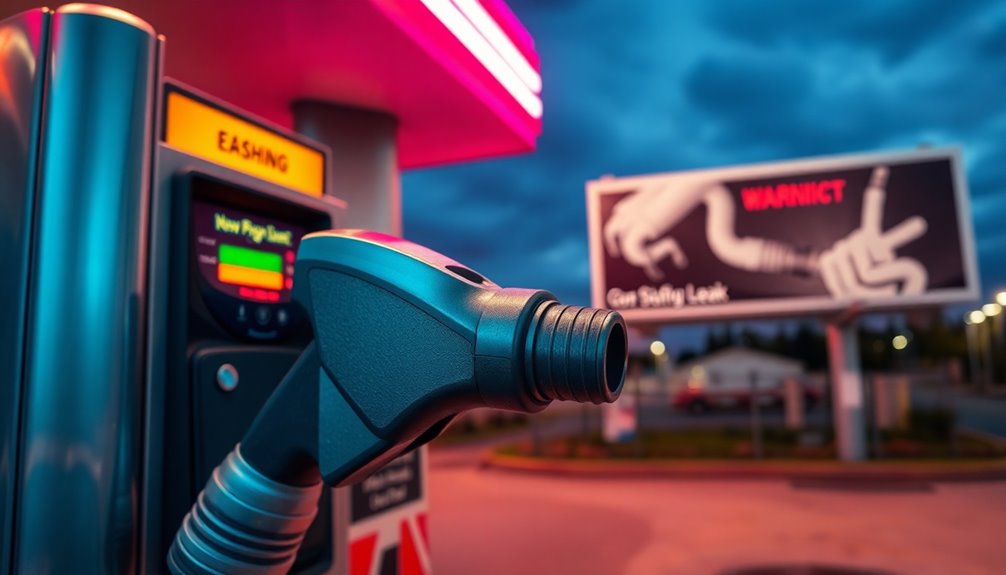
While enjoying the efficiency of gas appliances, it's crucial to remain aware of the potential safety concerns they bring. Gas systems, while cost-effective, can lead to hazards like gas leaks and carbon monoxide buildup if not properly maintained.
Ensuring adequate airflow through proper ventilation is essential to maximize gas efficiency and reduce health risks. Regular inspections and adherence to safety protocols are vital to keep your appliances operating safely.
Technological advancements in gas detection systems can further enhance safety by quickly identifying leaks, allowing you to respond before situations escalate.
Balancing efficiency with these safety measures ensures you enjoy the benefits of gas without compromising your well-being or that of your loved ones.
Gas Types Versus Applications
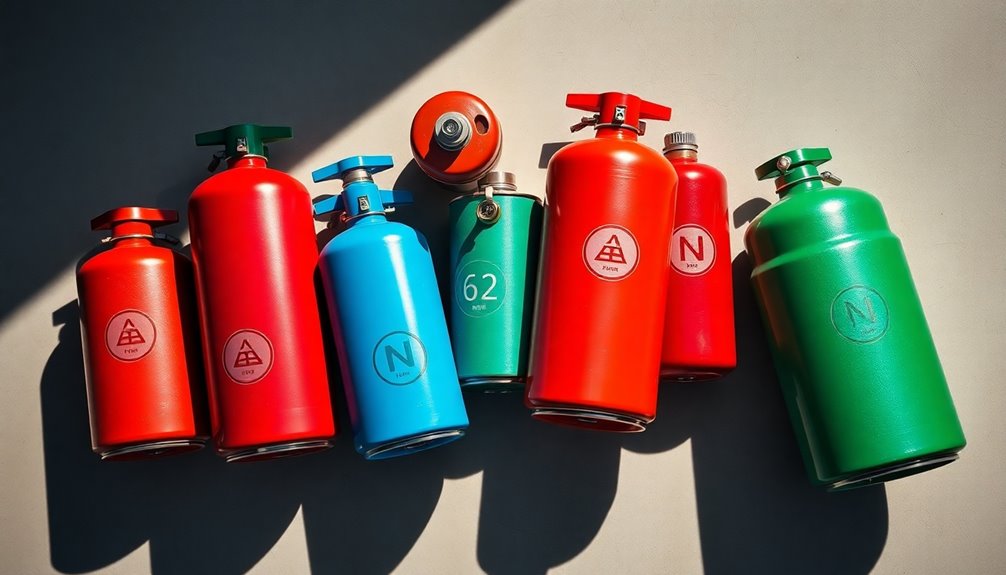
When considering the safety and efficiency of gas appliances, it's also important to recognize the variety of gas types available and their specific applications.
Elemental gases like hydrogen and oxygen are crucial for combustion and respiration, while noble gases such as helium and neon are used in lighting due to their inertness.
Greenhouse gases, including carbon dioxide and methane, significantly impact climate change by trapping heat.
Toxic gases, like carbon monoxide and ammonia, require careful monitoring in both industrial and residential environments.
Industrial gases, such as nitrogen and oxygen, play vital roles in manufacturing processes.
Lastly, natural gases, primarily methane, serve as essential fuel sources for heating and electricity generation, showcasing diverse applications across different sectors.
Safety in Gas Handling
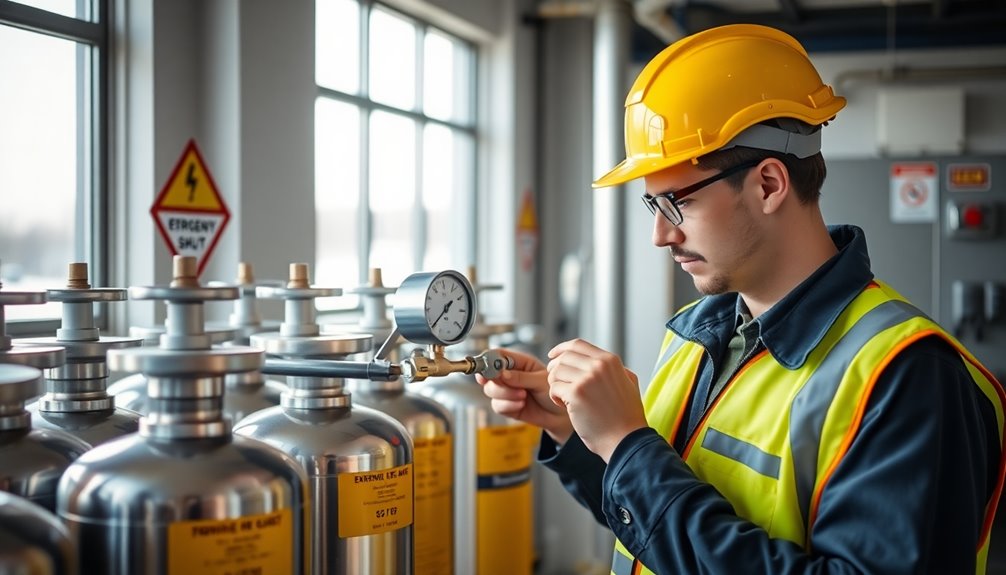
Ensuring safety in gas handling is crucial, especially since improper practices can lead to serious hazards.
Proper ventilation is essential when using gas appliances to prevent harmful gases, like carbon monoxide, from accumulating. Regularly inspect gas lines and appliances to identify leaks early—small leaks can often be detected by their distinct odor.
In case of a gas leak, evacuate the area immediately, and avoid using electrical switches or open flames, as these can ignite the gas.
Always use gas detectors and personal protective equipment (PPE) when handling gases, particularly in confined spaces.
Familiarize yourself with emergency procedures, including locating shut-off valves and emergency contacts, to effectively manage any gas-related incidents.
Your safety depends on it.
Emerging Gas Detection Technologies
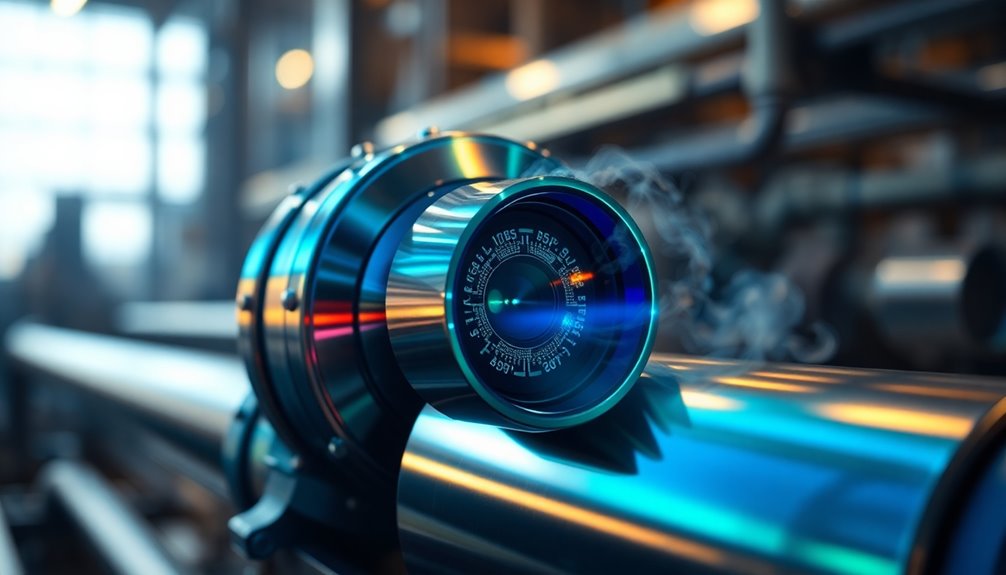
As you prioritize safety in gas handling, it's important to stay informed about the latest advancements in gas detection technologies.
Emerging innovations include advanced sensors that leverage nanomaterials and machine learning for improved sensitivity in identifying hazardous gases. Optical gas imaging (OGI) technologies enable real-time detection of leaks, using infrared cameras to visualize emissions.
Enhanced portable gas detectors now feature wireless connectivity, allowing for remote monitoring and data collection, which elevates safety and compliance. Photoionization detectors (PIDs) are gaining popularity for their ability to detect volatile organic compounds and toxic gases, providing immediate readings.
Integrated systems that combine electrochemical, infrared, and catalytic sensors offer comprehensive monitoring solutions for complex industrial environments, ensuring you're always a step ahead in gas safety.
Regularly Inspect Gas Equipment
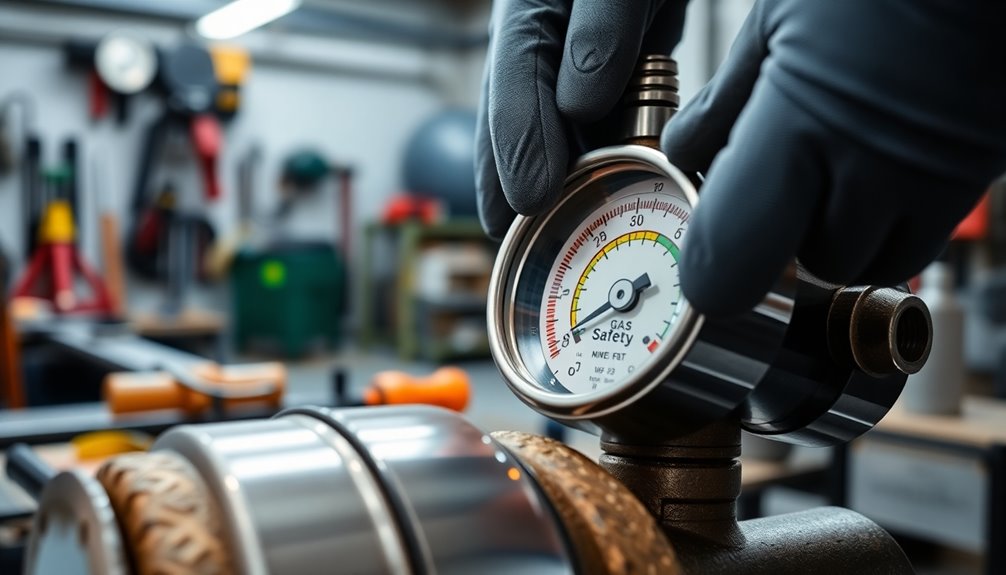
Regular inspections of gas equipment are essential for maintaining safety in your home or workplace. The National Fire Protection Association (NFPA) recommends annual inspections of gas appliances to identify leaks or malfunctions that can create safety hazards.
You should install gas detectors near potential leak sources and test them regularly to ensure they function properly. Watch for signs of incomplete combustion, like a yellow or orange flame, as this can indicate carbon monoxide production.
Keeping a maintenance log for your gas equipment helps track repairs and inspections, ensuring compliance with safety regulations. By prioritizing these inspections, you enhance overall safety and ensure your gas equipment operates efficiently.
Don't overlook this critical aspect of home and workplace safety!
Frequently Asked Questions
What Is Gas Made Of?
Gas is made up of tiny molecules or atoms that are constantly moving.
You'll find that these particles are spaced far apart, creating a lot of empty space between them. This arrangement allows gases to expand and fill their containers.
Most gases you encounter, like oxygen and nitrogen, exist as pairs of atoms, while mixtures, like air, combine different gases in varying proportions.
Their behavior is influenced by these molecular interactions and movements.
What Does Gas in Slang Mean?
In slang, "gas" means something's exciting or excellent. When you hear someone say, "this party is gas," they're emphasizing the fun atmosphere.
It's a term you'll likely encounter on social media, especially among younger crowds. Sometimes, it refers to high-quality marijuana, indicating a potent strain.
Additionally, "gas up" can mean to hype someone up, giving them encouragement. Overall, it's all about great experiences and high energy.
What Is the Simple Definition of Gas?
Gas refers to a state of matter that doesn't have a fixed shape or volume. You can think of it as something that fills up any container it's in, expanding easily.
The particles in gas are constantly moving and are spaced far apart, which is why gases are less dense than solids and liquids. Common examples include oxygen and nitrogen, both essential for life.
Understanding gas helps you grasp its role in everyday situations.
What Is Inside of Gas?
Inside a gas, you've got countless tiny molecules zipping around in constant motion.
These molecules are spaced far apart, making them behave differently than solids or liquids.
You'll find that they've various types of motion—translational, rotational, and vibrational—contributing to their energy.
The weak intermolecular forces allow them to fill any container, which means a small volume of gas can contain a huge number of particles.
Conclusion
In summary, understanding gas properties and behaviors is crucial for both efficiency and safety. By recognizing the different types of gases and their applications, you can make informed choices in handling them. Always prioritize safety by regularly inspecting your gas equipment and staying updated on emerging detection technologies. With this knowledge, you can effectively manage gas usage while minimizing risks, ensuring a safer environment for everyone involved. Stay informed, stay safe!
